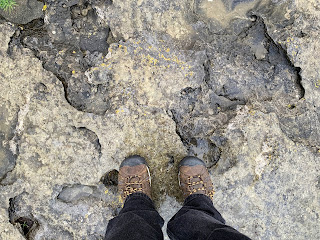 |
| click on images to enlarge |
The landscape of bedrock is lunar in appearance and consists of cracked pavement of glaciated limestone – likely the largest limestone pavement found anywhere in the world. Also found here are cliffs, caves, fossils, rock formations and archaeological sites.
Although the rock may appear bare and barren – agriculture remains an important tradition with roots going back almost 6,000 years. Livestock graze the hills in winter, clearing the ground of tough grasses and making way for the delicate plant life to flourish in spring.
This diverse ecosystem has been designated as a Special Area of Conservation by the European Union. Of Ireland’s 900 native plant species, the Burren is home to 70% – including the mountain avens, an Arctic-Alpine plant introduced by the retreat of the glaciers at the close of the last Ice Age.
The grikes (crevices in the limestone) provide moist shelter, supporting a wide range of rare Irish plant species including dwarf shrubs. The crevices are also home to countless smartphones dropped by visitors and never to be retrieved. On the Atlantic coast, the precipitous Cliffs of Moher are home to thousands of seabirds, including puffins.









No comments:
Post a Comment